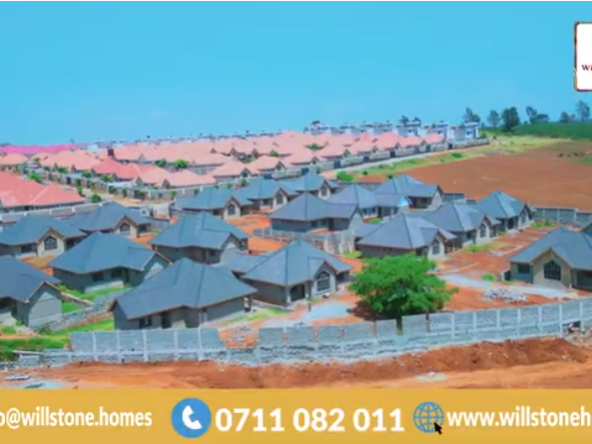Kenya’s housing demand and estate development push are colliding with an urgent need for speed, quality and cost control. Precast construction — the factory production of structural elements (walls, slabs, beams, columns and panels) that are later assembled on site — is rapidly moving from niche to mainstream as developers chase faster delivery and predictable budgets. This is particularly true for large gated estates, multi-unit projects and social housing schemes where time-to-market matters.
What “precast” means in practice
Precast construction involves producing components in a controlled factory environment, transporting them to site, and assembling them using cranes or specialised jigs. Products range from non-structural panels and fence walls to structural hollow-core slabs, prestressed beams and full modular units (pre-built rooms or pods). The result is a hybrid construction method that blends off-site precision with on-site assembly.
Read Also: Step-by-Step: The Building Approval Process in Nairobi County
Why precast is attractive for large estate development in Nairobi
- Speed — drastic reduction in on-site build time
Factory production removes many on-site dependencies (weather, skilled-labour bottlenecks, curing delays). Developers report dramatically shorter schedules: walls and slabs that take months in-situ can be fitted in days when precast elements arrive ready to install. This accelerates cash flow and reduces interest/holding costs. - Cost predictability and lower waste
Controlled casting reduces material waste, rework and theft risk on site. Several Kenyan practitioners and analyses suggest precast workflows can be materially cheaper per finished square metre once economies of scale are achieved — some local case studies estimate notable cost savings versus traditional methods. (See cost comparison table below.) - Quality and durability
Factory conditions (controlled mix, vibration, curing) improve concrete density and finish quality. Precast elements often outperform cast-in-situ counterparts in durability and dimensional accuracy. This matters for estates expected to retain value and minimise maintenance calls. - Design flexibility and repeatability
For estates with repeating unit types (blocks of bungalows, maisonettes, terraces), precast allows repeating molds and standardised components — lowering unit costs as volumes rise and ensuring consistent finish across the development. - Labour and safety
Shifting work to the factory lowers the requirement for large unskilled site crews, reduces dangerous on-site activities, and concentrates skilled labour in safer, repeatable tasks.
Who’s building Kenya’s precast supply chain?
Kenya now hosts a growing list of local precast specialists and suppliers — from full precast home manufacturers to panel and slab producers. Examples include Global Precast Panels Ltd, Precast Homes Ltd, Kingdom Precast Solutions, and other regional players that provide wall panels, hollow-core slabs and modular units. Portable plant models (e.g., Neulandt’s approach) also allow rapid set-up close to project clusters. This emerging supply base is helping reduce haulage costs and speed mobilisation for Nairobi projects.
Practical comparison — Precast vs Cast-in-Situ (typical estate use)
| Metric | Precast Construction | Cast-in-Situ (Traditional) |
|---|---|---|
| Typical on-site duration for external walls & slabs (per block) | Days–weeks (assembly) | Weeks–months (formwork, pour, cure) |
| Material waste | Low (factory control) | Higher (site cutting, rework) |
| Quality consistency | High (controlled curing) | Variable (site conditions) |
| Labour profile | More factory technicians, less site labour | More site labour, skilled masons |
| Cost per finished sqm (indicative ranges in Kenya) | KSh 15,000–30,000 (depends on system & finishes) | KSh 20,000–50,000+ (varies by method) — see notes. |
| Suitability for large estates | Excellent — benefits scale with volume | Works for bespoke designs; slower for repeats |
Notes: cost ranges are indicative and depend on panel type (non-structural vs prestressed), proximity of plant to site, transport/crane costs, finishes, and economies of scale. Local reports have shown precast projects achieving substantial savings where repetition and volume are high.
Typical workflow and timeline for a Nairobi estate using precast
- Design lock-down & modular standardisation — 2–4 weeks
- Factory tooling & mold preparation — 2–6 weeks (one-off)
- Panel/element production (rolling) — concurrent with site works (weeks)
- Foundations & base slabs (cast in situ) — 1–3 weeks
- Delivery & crane assembly of precast elements — days per block depending on size
- Services, finishes & handover — 4–8 weeks
In a typical medium-sized gated development (50–200 units), a well-planned precast programme can cut total structural shell time by 30–60% compared with traditional sequencing. (Savings grow with repetition and proximity between factory and site.)
Barriers and practical risks in Kenya
- Transport & crane logistics: heavy panels and hollow-core slabs require adequate road access and lifting capacity — an issue for remote or tightly constrained sites.
- Plant capital & setup: establishing a precast factory or contracting a local supplier requires upfront investment; small developers may find it unaffordable without pooled projects or contractor partnerships.
- Design & skills shift: architects and engineers must design for connections, tolerances and service routes unique to precast systems; the market still needs more trained designers and installers.
- Regulatory & standards: quality assurance and standardized codes for structural precast elements need stronger enforcement to prevent substandard components.
Read Also: Interior Finishes That Add Value to Kenyan Homes
How estate developers can operationalise precast in Nairobi
- Bundle demand — group several phases or neighbouring projects to reach factory-scale volumes.
- Partner with portable plant providers — short-term precast plants placed near the project reduce transport costs.
- Invest early in design for manufacture (DfMA) — lock module sizes and repetitions to maximise mold reuse.
- Train local teams — upskill supervisors and erectors to reduce assembly errors and rework.
- Plan logistics — assess road permits, crane hire, and storage laydown area in advance.
Case example (composite, illustrative)
A 120-unit gated estate in a Nairobi satellite town switches from traditional masonry to a panel-based precast system. Structural shell time falls from an estimated 9 months to 4.5 months; reduced on-site labour and waste improves predictability. Upfront plant mobilisation added to the capital budget but was recovered through shorter financing periods and earlier unit sales. (Illustrative synthesis from local project reports.)
When precast makes strategic sense
For Nairobi and its fast-growing satellite corridors, precast construction in Kenya is not a fad: it’s a pragmatic production technology that aligns closely with the needs of estate developers — speed, repeatability and quality. Precast is most compelling when projects have standardised unit types, sufficient volume, and logistics that support large element deliveries. Developers who invest in design-for-manufacture, local supply partnerships, and early planning stand to convert precast’s theoretical benefits into real commercial advantage.




